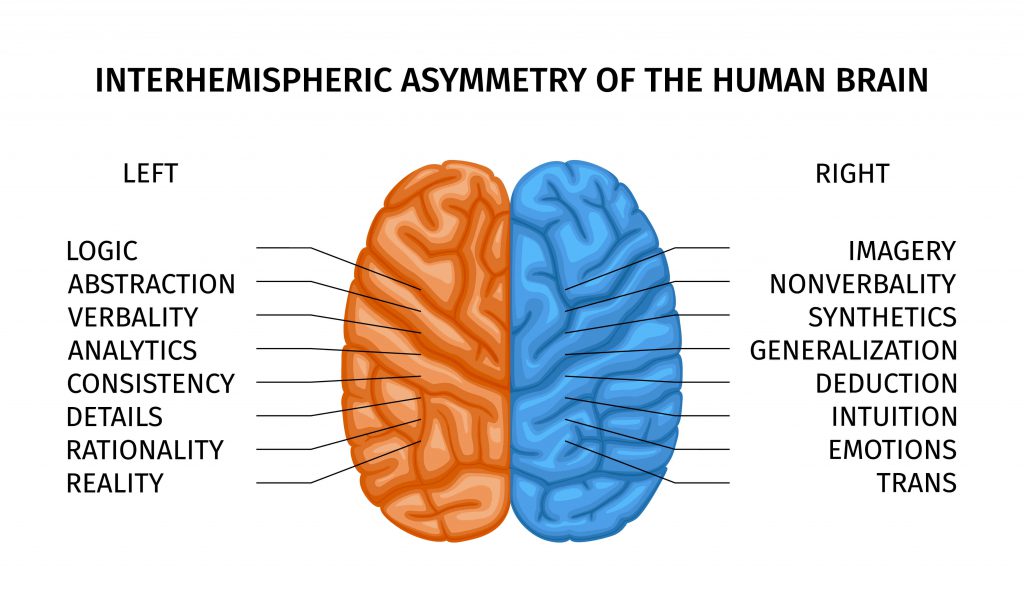Bipolar Disorder: Identifying Symptoms
Bipolar disorder, a complex and often misunderstood mental health condition, is characterized by significant shifts in mood, energy, activity levels, and the ability to carry out daily tasks. These shifts manifest as episodes of mania or hypomania (elevated mood) and depression (low mood), creating a pendulum swing that can profoundly impact an individual’s life. Accurate identification of symptoms is paramount for early intervention and effective management.
Time to feel better. Find a mental, physical health expert that works for you.
Manic Episodes: A Deep Dive
Mania is more than just feeling “happy.” It’s an intense, sustained state of elevated mood that can range from euphoria to irritability. Individuals experiencing mania often exhibit:
- Elevated Mood (Euphoria or Irritability):
- Euphoria can manifest as an overwhelming sense of joy, optimism, and invincibility. Individuals may feel like they are on top of the world, capable of achieving anything.
- Irritability, on the other hand, can lead to quick temper flares, impatience, and aggression. Even minor frustrations can trigger intense anger.
- These mood states are not fleeting; they persist for days or even weeks, significantly impacting behavior and decision-making.
- Increased Energy and Activity:
- Individuals may feel like they have boundless energy, requiring little to no sleep. They may engage in multiple projects simultaneously, often without completing any.
- This hyperactivity can lead to restlessness, pacing, and difficulty sitting still.
- They may also speak very loudly and rapidly.
- Racing Thoughts and Distractibility:
- The mind races with ideas, making it difficult to focus on one task. Thoughts jump from one topic to another, often unrelated.
- This can manifest as difficulty concentrating, completing tasks, and following conversations.
- External stimuli easily distract them.
- Impulsive and Risky Behaviors:
- Judgment is impaired, leading to reckless decisions. This can include excessive spending, engaging in unsafe sexual activity, or substance abuse.
- Individuals may feel invincible, believing they are immune to the consequences of their actions.
- These behaviors can have severe financial, social, and legal repercussions.
- Decreased Need for Sleep:
- Individuals may feel energetic despite getting only a few hours of sleep, or even none at all.
- This lack of sleep can exacerbate other manic symptoms and contribute to physical exhaustion.
- Grandiose Ideas and Delusions:
- Individuals may have an inflated sense of self-importance, believing they possess extraordinary abilities or talents.
- In severe cases, delusions may occur, such as believing they have a special relationship with a famous person or that they are on a divine mission.
- Rapid Speech (Pressured Speech):
- Speech is rapid, loud, and difficult to interrupt. Individuals may jump from one topic to another, making it hard for others to follow the conversation.
- Psychosis:
- In severe manic episodes, individuals may experience hallucinations (seeing or hearing things that are not there) or delusions (false beliefs).
- These psychotic symptoms can make it difficult to distinguish between reality and fantasy.
Hypomanic Episodes: A Milder Form
Hypomania is a less severe form of mania, characterized by similar but less intense symptoms. While hypomania may not significantly impair daily functioning, it can still disrupt lives and lead to problematic behaviors.
- Increased productivity, but also increased irritability.
- Increased socialbility, and talkativeness, but not to the degree of mania.
- Mildly inflated self-esteem.
Connect Free. Improve your mental and physical health with a professional near you

Depressive Episodes: The Opposite Swing
Depressive episodes involve a significant and persistent low mood, accompanied by a range of debilitating symptoms.
- Persistent Sadness and Hopelessness:
- Individuals feel a profound sense of sadness, emptiness, and despair that persists for most of the day, nearly every day.
- They may experience tearfulness, feelings of worthlessness, and a sense of hopelessness about the future.
- Loss of Interest and Pleasure (Anhedonia):
- Activities that were once enjoyable no longer bring pleasure. Individuals may withdraw from social activities and hobbies.
- This loss of interest can extend to relationships, work, and even basic self-care.
- Fatigue and Low Energy:
- Individuals feel constantly tired, even after adequate sleep. They may experience physical and mental exhaustion.
- Even simple tasks can feel overwhelming.
- Sleep Disturbances:
- Insomnia (difficulty falling or staying asleep) or hypersomnia (excessive sleepiness) can occur.
- Sleep disturbances can exacerbate other depressive symptoms.
- Changes in Appetite and Weight:
- Significant weight loss or gain can occur due to changes in appetite.
- Some individuals may experience a loss of appetite, while others may engage in emotional eating.
- Difficulty Concentrating and Making Decisions:
- Individuals may experience difficulty focusing, remembering, and making decisions.
- This can impair their ability to work, study, or manage daily tasks.
- Feelings of Worthlessness and Guilt:
- Individuals may experience excessive guilt, self-blame, and low self-esteem.
- They may dwell on past mistakes and feel like they are a burden to others.
- Suicidal Thoughts and Behaviors:
- Recurring thoughts of death, suicide, or self-harm are a serious symptom of depression.
- It is crucial to seek immediate professional help if these thoughts occur.
Types of Bipolar Disorder: Variations of the Spectrum
- Bipolar I Disorder:
- Defined by at least one manic episode, which may be preceded or followed by hypomanic or depressive episodes.
- Manic episodes are severe and can require hospitalization.
- Psychotic symptoms may occur during manic or depressive episodes.
- Bipolar II Disorder:
- Characterized by at least one major depressive episode and at least one hypomanic episode.
- Individuals with Bipolar II Disorder do not experience full manic episodes.
- Depressive episodes tend to be more frequent and prolonged than hypomanic episodes.
- Cyclothymic Disorder:
- Involves milder mood swings, with hypomanic and depressive symptoms that don’t meet the criteria for full episodes.
- Symptoms are chronic and persistent, lasting for at least two years in adults and one year in children and adolescents.
- Individuals with cyclothymic disorder may experience periods of normal mood between episodes.
- Other Specified Bipolar and Related Disorder:
- This diagnosis is used when a clinician finds that a person has bipolar symptoms that cause distress or impairment, but do not meet the full diagnostic criteria for any of the specific bipolar disorders listed above.
- Unspecified Bipolar and Related Disorder:
- This diagnosis is used when a clinician finds that a person has bipolar symptoms that cause distress or impairment, but does not have enough information to make a more specific diagnosis.
The Importance of Accurate Diagnosis
- Accurate diagnosis is crucial for effective treatment.
- Misdiagnosis can lead to inappropriate treatment and worsen symptoms.
- A comprehensive evaluation by a mental health professional is essential for accurate diagnosis.
Bipolar Disorder: Exploring Underlying Factors
Understanding the underlying factors contributing to bipolar disorder is crucial for developing effective prevention and treatment strategies. While the exact cause remains elusive, research has identified a complex interplay of genetic, biological, and environmental influences.
Genetic Factors: The Role of Heredity
- Family History:
- Bipolar disorder has a strong genetic component. Individuals with a first-degree relative (parent, sibling, or child) with bipolar disorder are at a significantly higher risk of developing the condition.
- The risk increases with the number of affected relatives.
- Gene Identification:
- Researchers have identified several genes that may contribute to susceptibility to bipolar disorder.
- However, no single gene is responsible. Bipolar disorder likely results from the interaction of multiple genes.
- Studies are ongoing to identify specific genes and their roles in the development of the disorder.
- Epigenetics:
- Epigenetics studies how environmental factors can change how your genes work.
- These changes are reversible and don’t change your DNA sequence, but they can change how your body reads a DNA sequence.
- This is a growing area of research into bipolar disorder.
Biological Factors: The Brain’s Role
- Neurotransmitter Imbalances:
- Neurotransmitters are chemicals in the brain that transmit signals between nerve cells.

Free consultations. Connect free with local health professionals near you.
Conclusion
Concluding a comprehensive exploration of bipolar disorder necessitates a synthesis of the multifaceted insights gleaned across its symptom identification, underlying factors, management strategies, and daily coping mechanisms. It’s clear that bipolar disorder is not a monolithic entity, but rather a spectrum of experiences shaped by a complex interplay of genetics, neurobiology, and environmental influences.
The journey toward effective management begins with accurate symptom recognition, distinguishing between the nuanced presentations of mania, hypomania, and depression.
Early detection and intervention are paramount in mitigating the disruptive impact of mood episodes and preventing the escalation of symptoms. Understanding the intricate dance of neurotransmitters, brain structures, and hormonal fluctuations underscores the biological underpinnings of this condition. While genetic predispositions may set the stage, environmental stressors often act as catalysts, triggering the onset or exacerbating the severity of bipolar disorder.
Treatment, therefore, adopts a holistic approach, integrating pharmacological interventions with psychotherapeutic techniques. Mood stabilizers, antipsychotics, and antidepressants play crucial roles in regulating mood and managing acute episodes. However, medication alone is insufficient. Cognitive behavioral therapy, interpersonal and social rhythm therapy, and family-focused therapy empower individuals with coping skills, foster healthy relationships, and promote adherence to treatment plans.
The daily realities of living with bipolar disorder demand resilience and adaptability. Establishing consistent routines, practicing stress-reduction techniques, and cultivating a robust support network are vital for maintaining stability and well-being. Mood tracking and early recognition of warning signs enable proactive intervention, preventing full-blown episodes. Self-care, encompassing healthy lifestyle choices and emotional regulation, becomes a cornerstone of long-term management.
Ultimately, the conclusion is not one of finality, but of ongoing progress. Research continues to unravel the complexities of bipolar disorder, paving the way for more targeted and personalized interventions. Increased awareness and destigmatization are crucial in fostering a supportive environment where individuals feel empowered to seek help and embrace their journey toward recovery. The narrative of bipolar disorder is not defined by limitations, but by the potential for resilience, growth, and a fulfilling life.
Time to feel better. Find a mental, physical health expert that works for you.
Common FAQs
General Questions:
What is bipolar disorder?
How is bipolar disorder different from regular mood swings?
Everyone experiences mood swings, but bipolar disorder involves more intense and prolonged episodes. The mood swings in bipolar disorder are severe enough to disrupt daily life, relationships, and work.
Is bipolar disorder hereditary?
Yes, there’s a strong genetic component. If you have a family history of bipolar disorder, you’re at a higher risk of developing it.
Can bipolar disorder be cured?
There is no cure for bipolar disorder, but it can be effectively managed with long-term treatment.
Common FAQs
Symptoms and Diagnosis:
What are the symptoms of a manic episode?
Symptoms include elevated mood, increased energy, racing thoughts, impulsive behavior, decreased need for sleep, grandiose ideas, rapid speech, and, in severe cases, psychosis.
What are the symptoms of a depressive episode?
Symptoms include persistent sadness, loss of interest, fatigue, sleep disturbances, changes in appetite, difficulty concentrating, feelings of worthlessness, and suicidal thoughts.
How is bipolar disorder diagnosed?
Can bipolar disorder be misdiagnosed?
Yes, it can be misdiagnosed as depression, anxiety, or other mental health conditions.
Common FAQs
Treatment and Management:
What are the common treatments for bipolar disorder?
What are mood stabilizers?
Mood stabilizers are medications that help regulate mood and prevent extreme mood swings. Lithium and certain anticonvulsants are commonly used.
Is therapy necessary for bipolar disorder?
Yes, therapy is a crucial part of treatment. It helps individuals develop coping skills, manage stress, and improve relationships.
What lifestyle changes can help manage bipolar disorder?
Maintaining a regular sleep schedule, managing stress, eating a healthy diet, avoiding substance abuse, and building a support system are essential.
Common FAQs
Daily Life and Coping:
How can I support someone with bipolar disorder?
Educate yourself about the condition, offer emotional support, encourage them to seek treatment, and be patient and understanding.
Can people with bipolar disorder live normal lives?
Yes, with effective treatment and coping strategies, individuals with bipolar disorder can lead fulfilling and productive lives.
What are some coping strategies for bipolar disorder?
Mood tracking, stress reduction techniques, consistent routines, support systems, medication adherence, and therapy attendance.
Are support groups helpful?
People also ask
Q: Can bipolar have a normal life?
Q: What's it like being bipolar?
Q: What causes bipolar?
Q: What age does bipolar start?
NOTICE TO USERS
MindBodyToday is not intended to be a substitute for professional advice, diagnosis, medical treatment, or therapy. Always seek the advice of your physician or qualified mental health provider with any questions you may have regarding any mental health symptom or medical condition. Never disregard professional psychological or medical advice nor delay in seeking professional advice or treatment because of something you have read on MindBodyToday.
Share this article

Let us know about your needs

Quickly reach the right healthcare Pro

Message health care pros and get the help you need.
Popular Healthcare Professionals Near You
You might also like
What is Learned Helplessness?
, What is Learned Helplessness? Everything you need to know Find a Pro Expanding on Learned Helplessness Learned helplessness, as […]
What is Left Brain – Right…
, What is Left Brain – Right Brain? Everything you need to know Find a Pro Brain Hemispheric Collaboration The […]
What is Loneliness?
, What is Loneliness? Everything you need to know Find a Pro Loneliness: Prevention and Health Impacts Loneliness, a deeply […]





